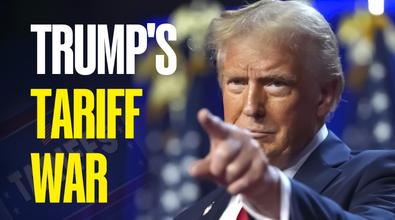By Subrata Majumder
Currently, USA is the prime trigger for India’s external economic growth. It is the biggest export destination of India. The trajectory of export growth is not sporadic. USA has been the biggest importer of Indian merchandise continuously for over a decade.
Even during Donald Trump’s first period (2017-2020), overall growth in export was sustained, albeit Trump’s protectionism. Exports to USA bowed the seeds of progressive growth for India‘s external economy year-by-year, largely balancing India’s big imports. Its share in India’s export leaped from 12.4 percent in 2013-14 to 17.7 percent in 2023-24.
To this end, India’s over-dependence on USA signals alarming with Trump’s fierce tariff war and anti-immigration policy. Nevertheless, the situation does not deem grim as it has been hyped. Factors attributed to the resilience are the export basket and indispensible qualitative Indian IT services at reasonable cost.
The stunning growth in export, arresting Trump’s hubris, attributes to product characteristics in export basket. They are diamonds, readymade garments, textiles, drugs and pharmaceuticals and petroleum refinery products.
In most of these products in export basket, Trump’s high tariff could rather boomerang, leaving American consumers at despair facing higher prices. For example, diamonds and semiprecious stones, textiles and readymade garments are those products, which account for nearly one-fifth of India’s export basket to USA. In none of these product groups, U.S. investors are either keen to invest or have skills to produce at a competitive price.
Penetration of Indian diamonds depends upon human capacity, which needs long year’s experience of artisans. India is known as the global hub for cut and polishing of small diamonds. They produce high quality well-cut diamonds at a low labour cost with diverse ranges in shape, sizes and grades.
Indian garments are popular in USA due to combination of factors like intricate design, skilled craftsmanship, low prices, large variety of styles and growing ethnic design and fashions.
Indian garments are preferred over Vietnamese and Chinese garments because of its intricate patterns, embroidery and diverse fabrics like silk and cotton, reflecting a rich cultural heritage.
Oil refinery products and drugs and pharmaceuticals account for larger shares in total exports of India to USA. In 2023-24, they accounted for about 19 percent for total exports of India to USA.
Indian oil refinery products are preferred in USA against others because of their affordability, owing to cheap Russian oil. After sanction, Russian crude was priced to India at US $ 60 per barrel, as compared to global price of US$ 80 to 90 per barrel.
Evidently, past experience of Trump’s protectionism will sway the threat. During his first term (2017-20), withdrawal of Special Status under GSP scheme (Generalized System of Preference) and imposition of high tariffs on steel and aluminum, failed to dwarf exports from India. Incidentally, over the period GSP benefits lost lustre. It accounted for 2 percent of India’s export to USA.
India is currently third biggest exporter of pharmaceutical products and fourth biggest exporter of readymade garments in the USA market. In 2022, it accounted for 5.5 percent of total imports of pharmaceutical products and in 2023, accounted for 7 percent in total imports of readymade garments in USA market.
For generic drugs Americans rely on standard prescriptions like antibiotics, which are predominantly sourced from developing nations where production costs are low, according to Coalition for a Prosperous America.
Nevertheless, India has an edge over China. notwithstanding, China being the biggest supplier of readymade garments and drugs and pharmaceuticals to USA, higher import tariff on China will give an edge to India. This will lend advantage to India to cut a share of Chinese market in USA. To this end, higher import tariffs on China could be of benefit to Indian exporters to counter-balance the impact of hike in import tariffs on Indian products.
Turmoil of Bangladesh exports will be another factor for India to tide over the tariff affected garment exports. Bangladesh is the third biggest exporter of garments in the USA market, sharing about 11 percent of imports of garments.
India cut a big pie in export of IT services to USA. In 2023, India’s export of IT software to USA was US$ 32O billion. It accounted for 55.5 percent of total software exports from India.
Restriction on immigration looms big threat to India’s export of software. India is the biggest beneficiary of H1B visas. Annually, more than 70 percent of H1B visas is issued to Indians.
But, there is another side of restriction on immigration, which may prove benign to India. It may increase USA investment in India. US IT firms, who were more dependent on India for cost effective services, will open their branches in India for off-shore services.
During Trump’s first term, US FDI in India soared. It made a big leap from US$2.2 billion in 2017 to US$14.3 billion in 2020. The big IT and financial services companies, such as Intel and Morgan Stanley, made bulk investments in India. Currently, nearly 44 percent of US investment in India embraces computer software and hardware (mainly software).
Therefore, Trump’s protectionism – high tariff and anti-immigration policy would not have impact on India’s exports. (IPA Service)




 Why Ad Hoc Judges Risk Undermining The Indian Judiciary These Days?
Why Ad Hoc Judges Risk Undermining The Indian Judiciary These Days? 